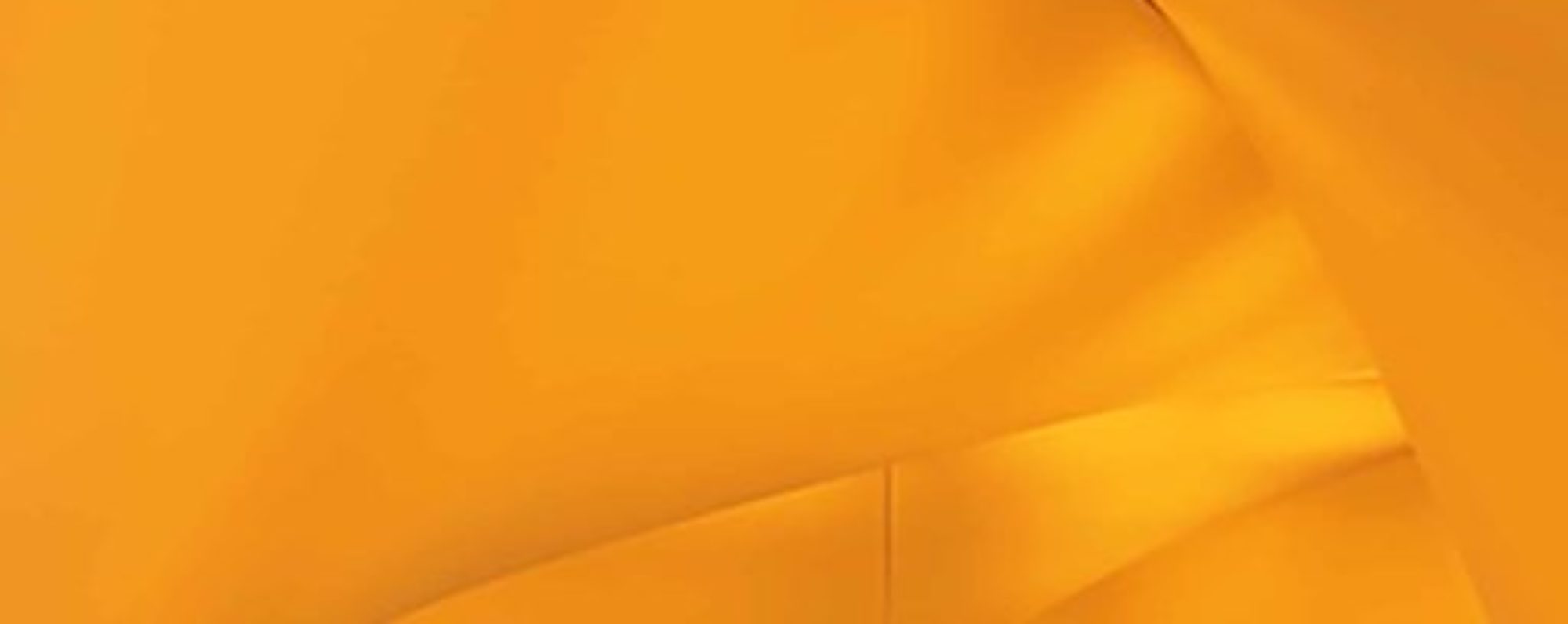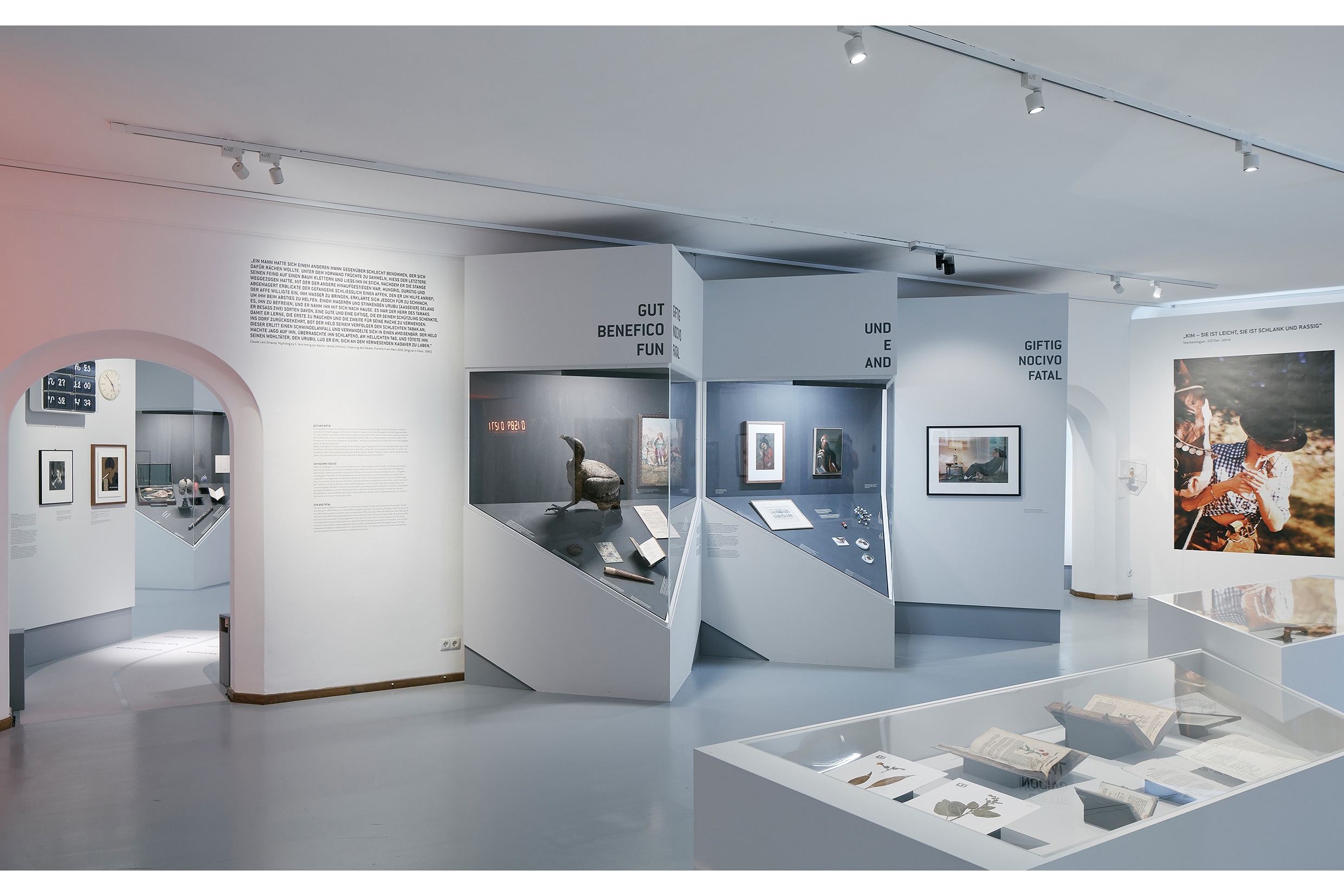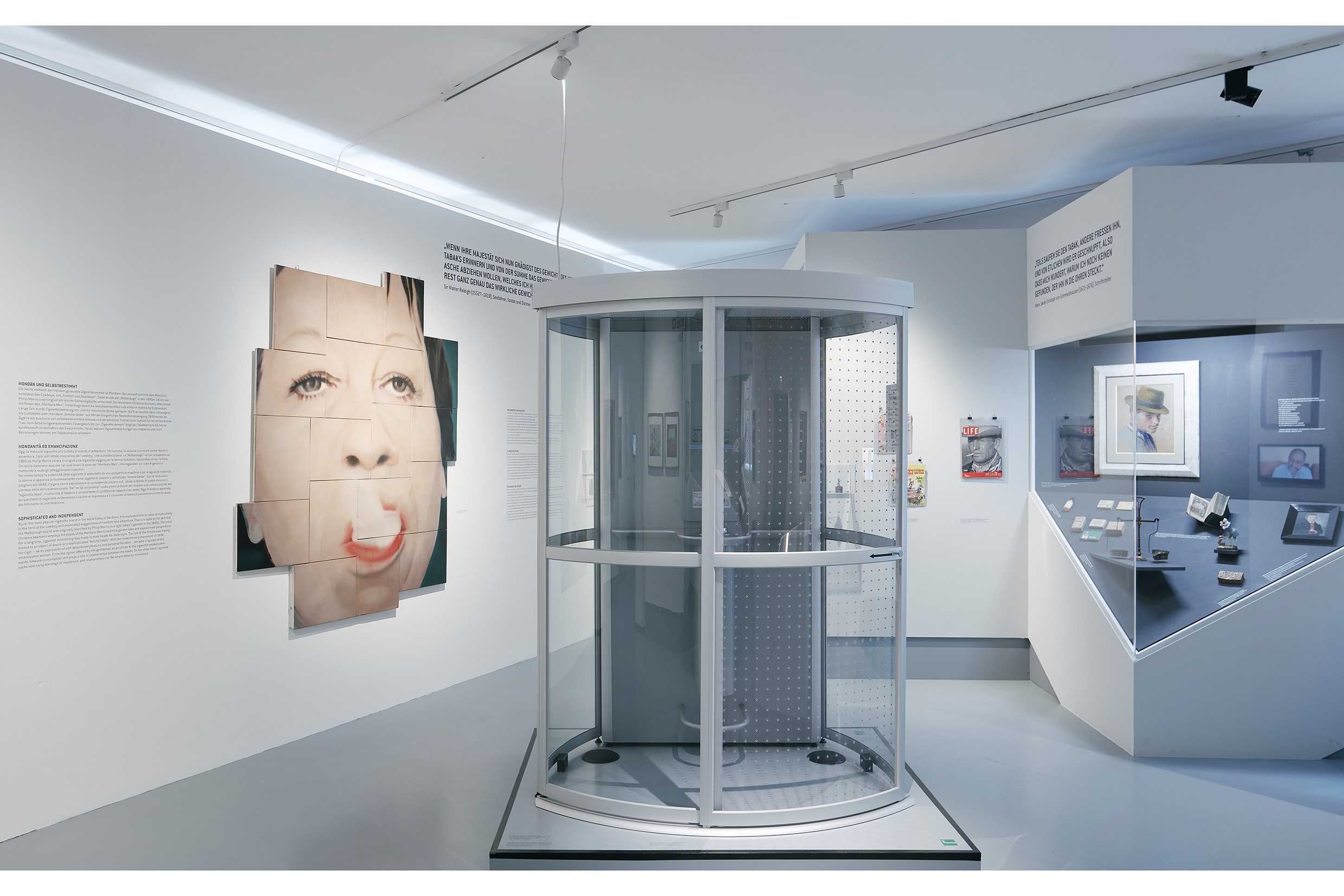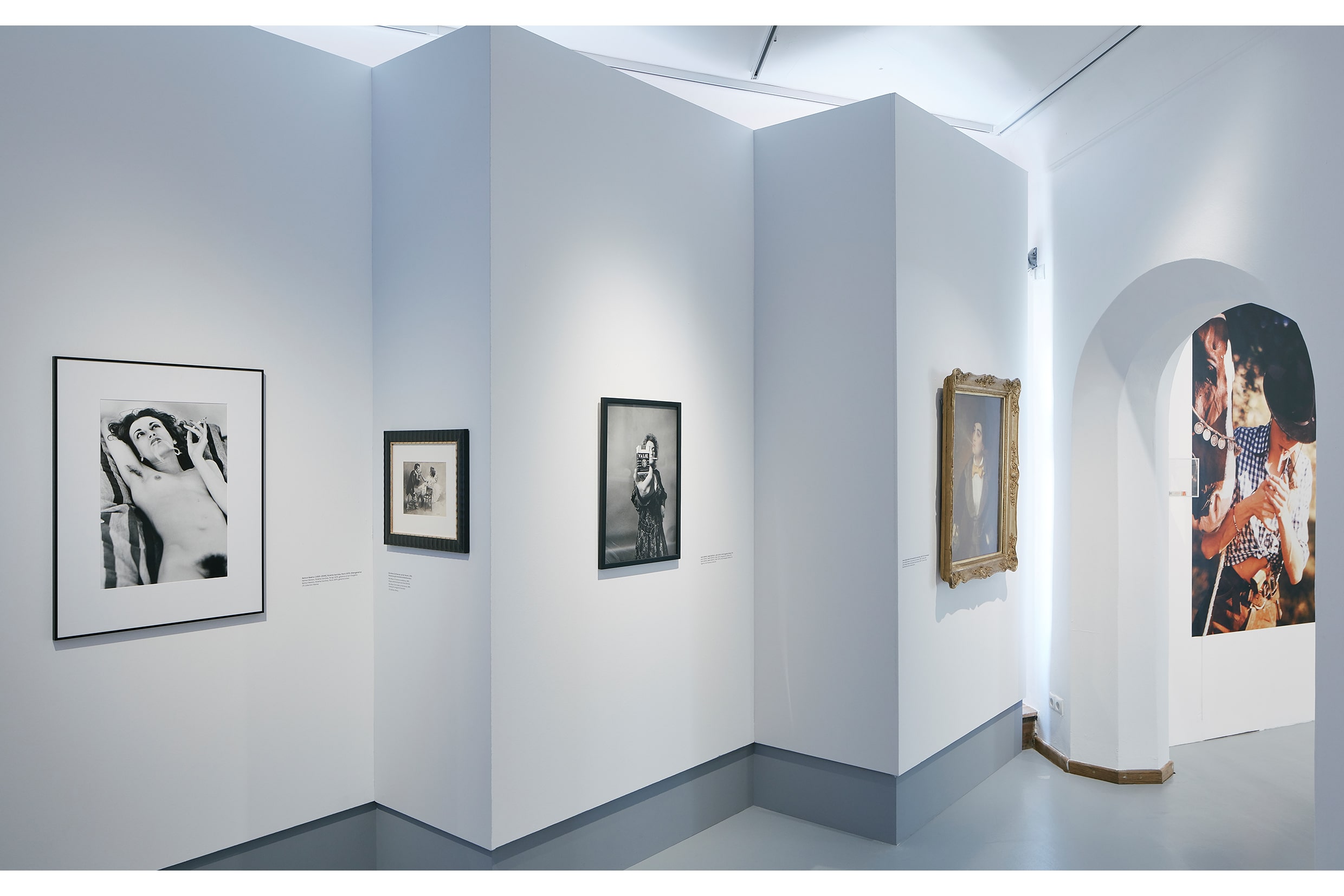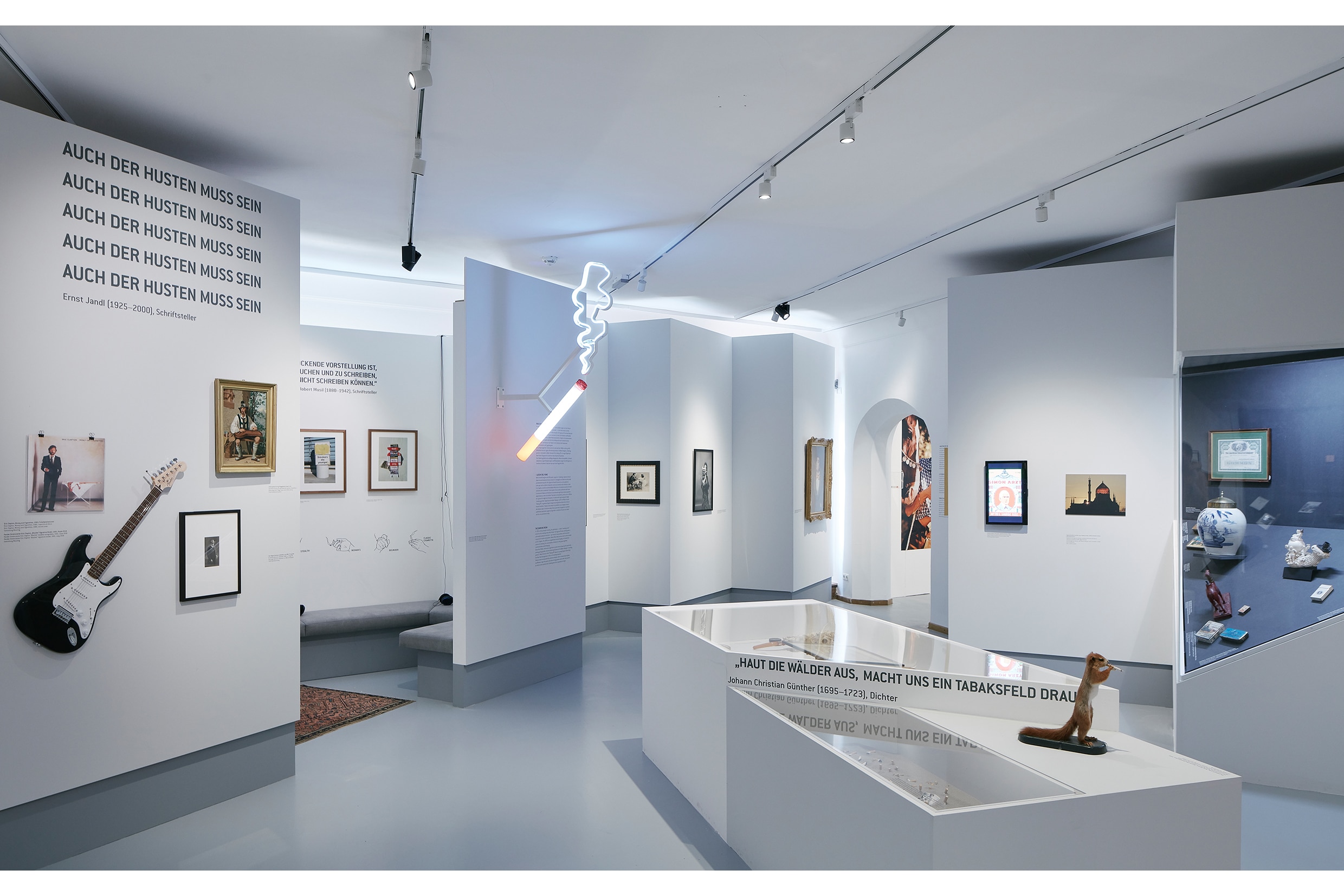Fotos © David Schreyer
Axis jump in the folding room. About the design of the exhibition
The architecture of the exhibition Auf der Kippe is conceived as a folding room in which visitors dive in and out. The spatial staging varies and thus leads to changes in perception. The multiple levels of legibility aim to change the usual perceptions. Myths and mysteries surrounding tobacco are unfolded step by step through the mode of presentation.
The fact that the topic is polarizing in a cultural-historical and socio-political context and yet allows for the most diverse ways of looking at it quickly became apparent in the exchange with the curator Günther Moschig. The task was therefore to develop a spatial concept that would allow viewers to grasp the diversity of the theme and to engage with a wide variety of perspectives on smoking.
The spatial concept uses the method of folding for this purpose. The French philosopher Gilles Deleuze once considered the abundantly folded clothing in Baroque painting as a sign of the break with Renaissance space. Here, as in the architectural context, folds dissolve the structural rigidity of perspective. By moving around in space, the points of view change, the axes of vision transform dynamically through the sculpturally folded exhibition walls. This opens up new perspectives for the visitors. The exhibition design thus offers the audience the possibility to approach the subject from several sides at the same time.
The visitor, who moves through the room, becomes the cameraman of a film setting in which the so-called axis jump is used. This is an editing technique that serves to jump the actors' relationship axis. Two cameras, which take up opposite points of view, are directed at a scene. The viewer sees one and the same scene once from one side then from the other. The exhibition setting gives two main viewing directions: the view to the front and the view to the back. The exhibition walls are folded at a 90-degree angle and positioned in the exhibition space so that one side of the walls faces the entrance and the other faces the opposite direction. Visitors therefore only have a partial view of the exhibition when they enter the room. The deeper they go into the room, the wider the field of vision opens up. The levels of perception change. In the end, the conditions are literally reversed. The view of things has actively changed.
The folding walls, colored by light, appear warm and cool. The color of the light is adjusted to the respective contents, the color temperature was chosen in dialogue with the curator. The showcases appear in different shades of white light. The showcases are also part of the folding walls, their glazing runs around the corner and views are possible from both sides. The exhibition objects placed in them are therefore visible from almost all points of view in the room, intertwining the overarching thematic blocks with each other. An explicit fusion of the themes occurs in the centrally positioned display cases, which form a kind of table in the middle of the two exhibition rooms. In the second room, the folding walls form a retreat with seating. Only at the end of the exhibition, visitors are confronted with a daily issue and decide between two exits: smoking/non-smoking.
Both exits lead to a lounge that invites visitors to sit down, relax, process what they have seen and, after a short break, perhaps wander through the exhibition again and choose a completely different perspective for their own camera work.
Text excerpt from the exhibition catalog: "Auf der Kippe - eine Konfliktgeschichte des Tabaks", 2019 Tiroler Landesmuseum-Betriebsgesellschaftm.b.H.
Curator: Günther Moschig
Client: Tiroler Landesmuseen
